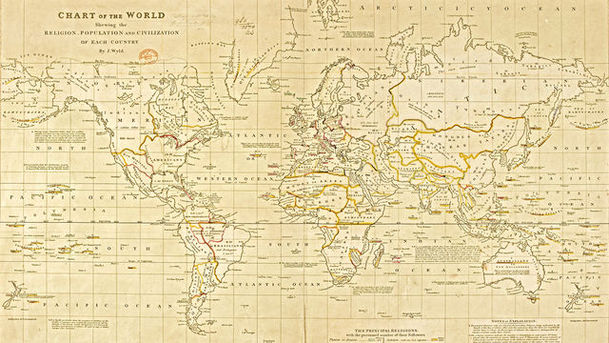Maps: Power, Plunder and Possession - Mapping the World

In the last of a three-part series about the extraordinary stories behind maps, Professor Jerry Brotton uncovers how maps are snapshots of a moment in history and offer visions of distant lands, tempting explorers to plunder and conquer. However, adventurers first had to tackle the great challenge of mapping the globe onto a flat surface. There is no perfect solution, but the father of geography, Claudius Ptolemy, had some clever ideas. Explorers like Christopher Columbus sailed into the unknown in search of riches and discovered a whole new continent that would become the most powerful on earth, while Amerigo Vespucci gave it his name. Sir Walter Raleigh's treasure map of Eldorado in South America ultimately lost him his head. But the myth of Eldorado lived on, sending hundreds of men to their death in fruitless attempts to find the golden city. As navigation became easier, maps enabled nations and enterprises like the Dutch East India Company to plunder far-off territories for spices, natural resources and gold. Even today, a project to map the North Pole is the flashpoint for the so-called 'Cold Rush' - the dash to exploit oil, gas and mineral reserves as the Arctic ice melts.